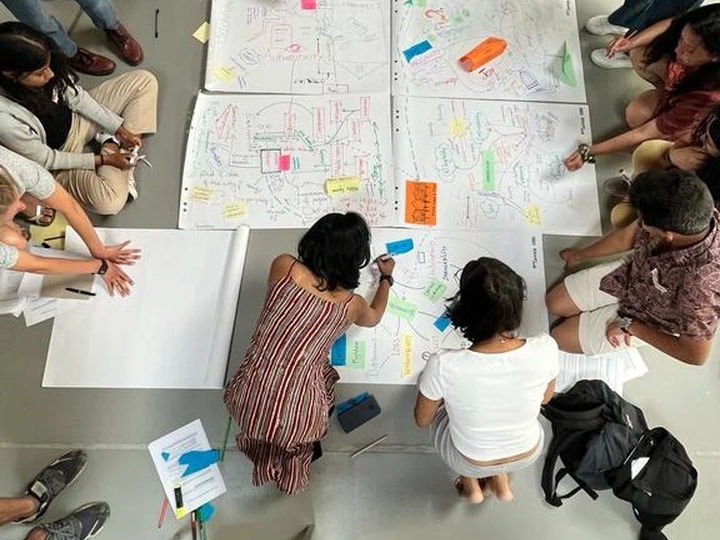The Handbook of Urban Transformation

Mihir Desai
Diego Jaimes-Niño
Kattyayani Joag
Inah Kim
Anita Markmiller
We are a diverse group of multidisciplinary students from various fields: art history, architecture, geography, and social science. Our shared interest is in conducting research as a laboratory of methodologies from our respective areas of scholarship. We aim to produce practical knowledge while acknowledging our interconnectedness with the multispecies world. Our collaborative approach involves translating concepts into problem-solving approaches, offering academic consultancy to address real-world issues.
Ira Borgstedt is a M.Sc. student of Geography at Heidelberg University (HU), focusing on planning and the built environment. She explores power dynamics' impact on socio-spatial distributions within the city.
Mihir Desai is a Healthcare architect, cartographer, and marine biologist from Mumbai, now based in Vienna. Co-author of publications mapping prejudice in urban planning for coastal communities' legal advocacy. His work involves historicizing maps through non-teleological historical analysis of cartographic theory.
Inah Kim is a M.A. student of Art History and Transcultural Studies at HU, interested in examining how contemporary settings have changed aesthetic notions of space, time, and the nature-human dualism.
Kattyayani Joag is a M.A. student of Transcultural Studies at HU, researching the informal waste segregation industry in Dharavi, India. Her interests lie in the links between citizenship and urbanity.
Diego Jaimes-Niño is an Architect and M.A. student of Cultural Heritage at HU, focused on redefining paradigms of urban built cultural heritage through practical work and a sense of place. He engages in cultural management, communication, and exchange.
Anita Markmiller is a M.A. student of Art History and Transcultural Studies at HU, with a background in psychology. Her research explores how the visual shapes aesthetics and knowledge concerning humanity's connection with nature and the ocean, and its reflection in art.
The need for the Handbook of Urban Transformation arose out of the ‘Glossary of Urban Transformation’, a series of workshops undertaken by Crossmopollinate, in collaboration with the Urban Transformation and Placemaking project at the University of Heidelberg supported by the DAAD. These workshops, intended to create a rhizomatic glossary of terms that deals with the notions of Urban Transformation as encountered by the various disciplines that deal with urbanity, such as anthropology, urban planning, geography, transcultural theory, art history, architecture, and cartography—moving beyond a linear, grid pattern of meaning-making towards an associative mycelium-like assemblage. The glossary serves as the first chapter of the Handbook of Urban Transformation. Our goal is to seek the possibility of co-producing knowledge through a more locally situated, community-based structure. The glossary thus became a starting point for us to think about a methodological framework that paves the way for reshaping our lived spaces. We intend to create an open-source handbook that functions as a manifesto, a journal, a catalog, and a pedagogic tool. The Handbook seeks to abstract, democratise and decolonise mapping, while being critical of the historically contested mode of documentation. Making mapping a form of community expression and participation will serve as a method of charting not only spaces but also their sociopolitical implications. The structure of our collective, which comprises a diverse yet interconnected set of disciplines inherently supports mapping as a method that brings in the several layers of being in the city. We wish to thereby challenge the existing modes of authorship of maps and put the community in the center of authorship. Keeping in tune with the notion of the rhizome, we intend to create a method that can be recontextualised in several urban nodes, starting with Dharavi, India, and wish to further spread the nodes through the LINA community.